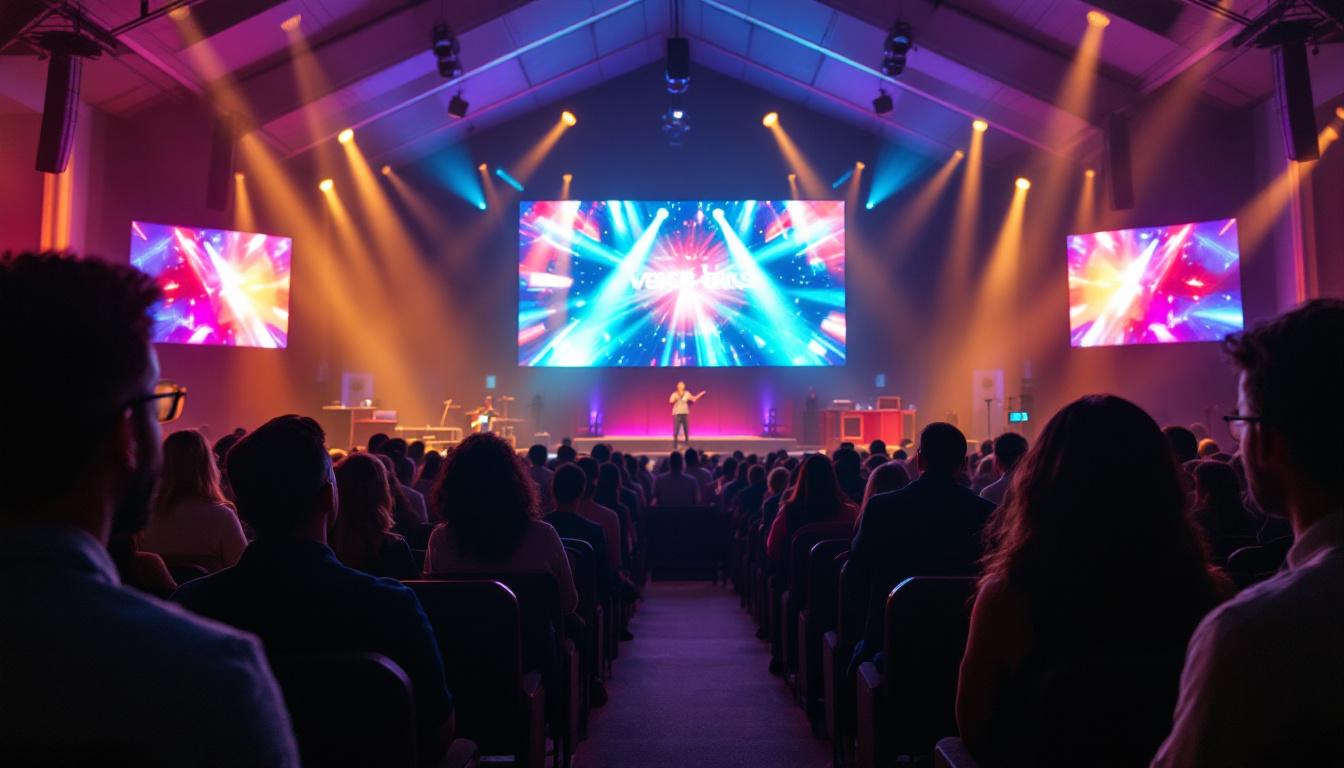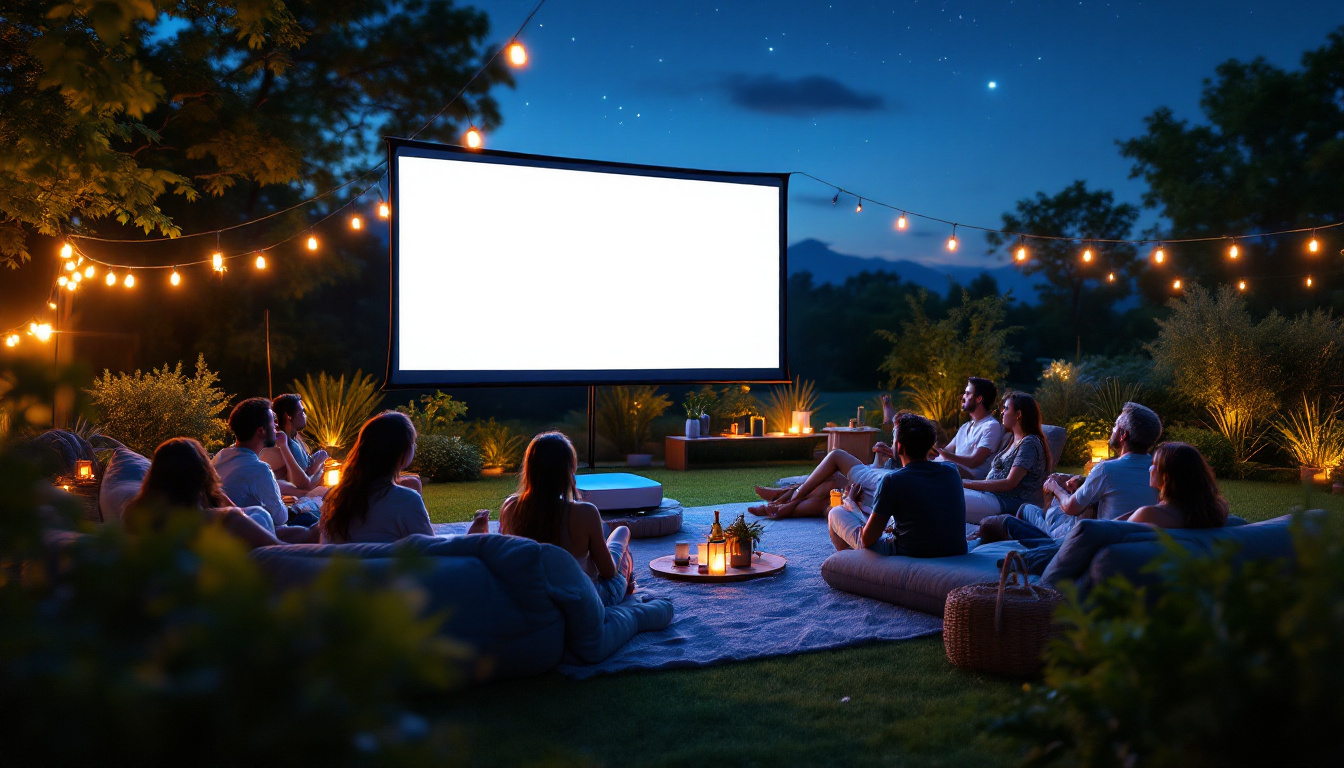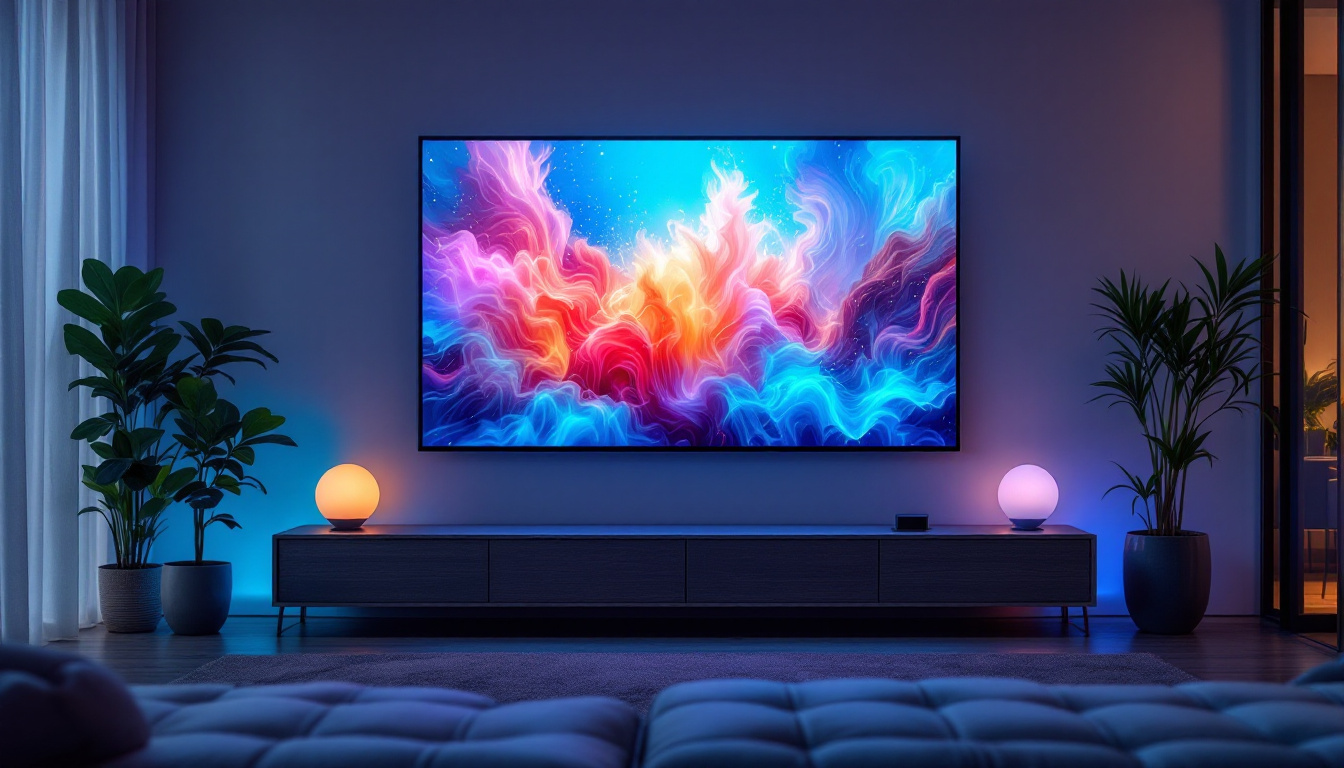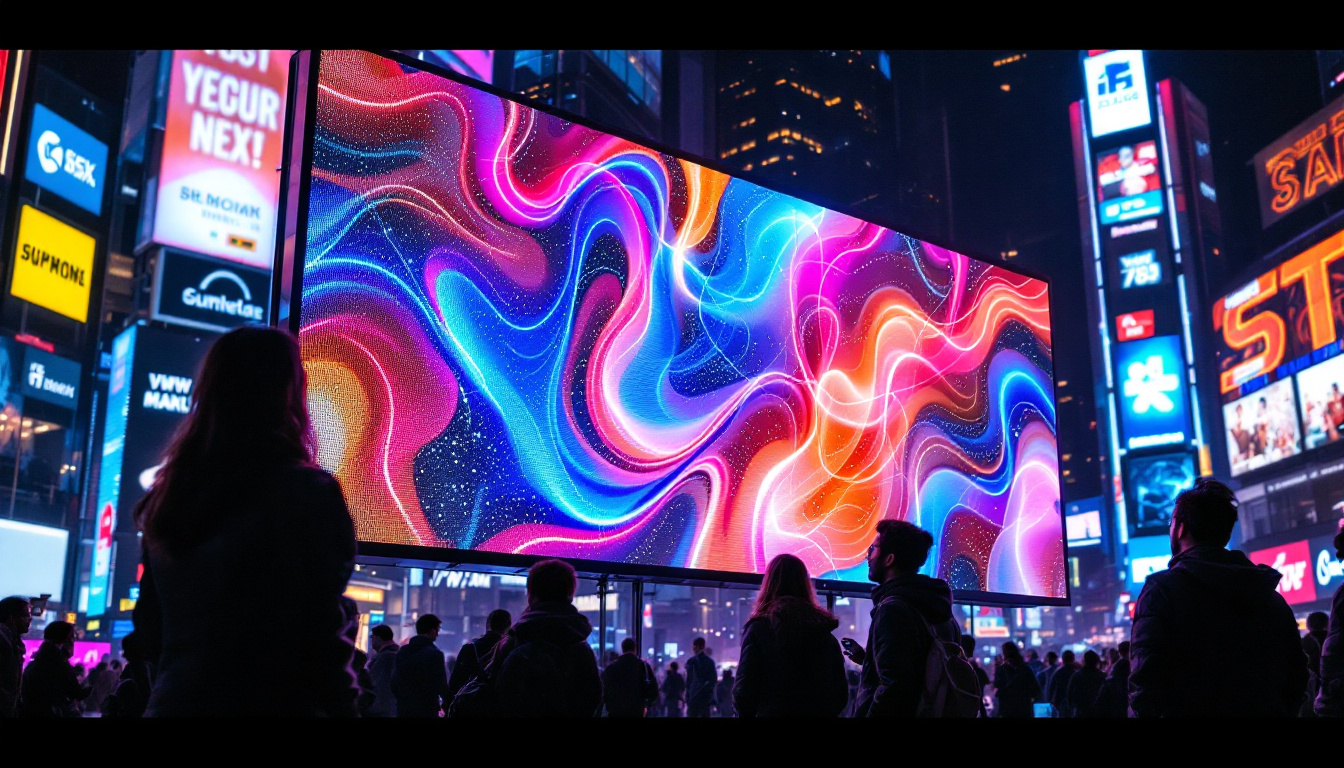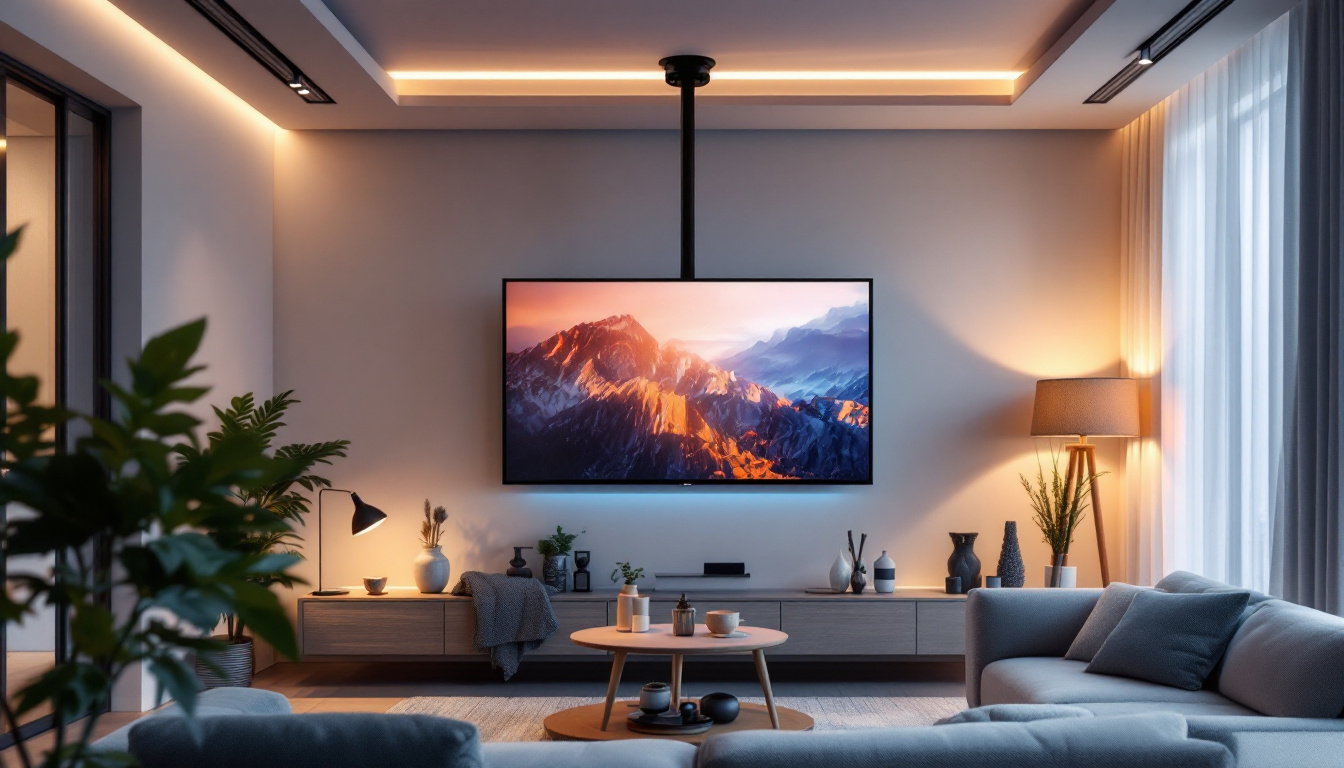In today’s rapidly evolving world of worship technology, LED displays have become a cornerstone in modern church platform designs. These vibrant, versatile screens not only enhance the visual experience but also foster deeper engagement among congregations. Understanding how LED displays function, their benefits, and how to integrate them effectively into church settings is essential for any ministry looking to elevate its worship environment.
Understanding LED Display Technology
What is an LED Display?
LED, or Light Emitting Diode, displays consist of numerous tiny diodes that emit light when an electric current passes through them. Unlike traditional projection systems or LCD screens, LED displays produce their own light, resulting in brighter, clearer images that are easily visible even in well-lit environments. This self-illumination capability makes them ideal for church platforms where ambient lighting can vary significantly. Furthermore, LED technology is energy-efficient, consuming less power compared to older display technologies, which is an important consideration for churches aiming to reduce their operational costs while maintaining high-quality visual presentations.
Types of LED Displays Used in Churches
Churches typically choose from two main types of LED displays: indoor and outdoor. Indoor LED displays are designed for controlled lighting conditions and offer higher pixel density for sharper images. Outdoor LED displays are built to withstand weather elements and provide high brightness to combat sunlight glare. The versatility of these displays allows churches to engage their congregations in various ways, from displaying hymn lyrics and sermon notes to showcasing multimedia presentations that enhance the worship experience.
Within indoor options, there are fixed LED walls and modular panels. Fixed LED walls are permanent installations, often spanning large portions of the stage backdrop. Modular panels allow for flexible configurations, making them suitable for churches that desire adaptable stage designs. Additionally, some churches opt for curved or creative-shaped LED displays, which can add a dynamic visual element to the worship environment, drawing the congregation’s attention and enhancing the overall aesthetic. These innovative designs not only serve functional purposes but also contribute to the artistic expression of the church’s mission and values, creating a more immersive experience for attendees.
Benefits of LED Displays in Church Platforms
Enhanced Visual Engagement
One of the primary advantages of LED displays is their ability to captivate the congregation visually. High-resolution imagery, vibrant colors, and dynamic video content can transform the worship experience. Whether displaying song lyrics, sermon notes, or multimedia presentations, LED screens ensure that all attendees, regardless of seating location, have clear visibility.
Studies show that visual aids in worship services can increase congregational participation by up to 40%, emphasizing the importance of clear, engaging displays. This heightened engagement can lead to a more immersive experience, allowing congregants to feel more connected to the message being delivered. Additionally, the use of LED technology can help create a more inviting atmosphere, encouraging newcomers to feel at ease and participate actively in the service.
Flexibility in Content Presentation
LED displays offer unparalleled flexibility in content management. Churches can seamlessly switch between different types of media—live video feeds, pre-recorded sermons, scripture verses, and even social media interactions. This adaptability supports a wide range of worship styles, from traditional to contemporary, and can be tailored to specific events such as youth services, special celebrations, or outreach programs.
Moreover, the ability to integrate various multimedia elements allows for a more dynamic storytelling approach during sermons. Pastors and leaders can incorporate video testimonials, dramatic presentations, or even live polls to gauge the congregation’s thoughts on certain topics. This not only enriches the overall experience but also fosters a sense of community as members see their voices reflected in the service.
Improved Accessibility
For congregants with hearing impairments or those seated far from the stage, LED displays can significantly improve accessibility. By projecting clear text and visual cues, these screens help ensure that everyone can follow along with the service. Incorporating closed captioning or sign language interpreters on the LED display further enhances inclusivity.
In addition to aiding those with hearing impairments, LED displays can also benefit individuals with visual challenges. By utilizing larger fonts, contrasting colors, and high-definition images, churches can create a more welcoming environment for all attendees. Furthermore, providing translations of sermons or song lyrics in multiple languages on these displays can help bridge cultural gaps, making services more accessible to diverse congregations and fostering a sense of belonging for everyone involved.
Design Considerations for Integrating LED Displays in Church Platforms
Size and Placement
Determining the appropriate size and placement of LED displays is crucial for maximizing their impact. The screen should be large enough to be seen clearly from the back rows but not so overwhelming that it detracts from the worship atmosphere. A common guideline is that the height of the screen should be at least one-sixth the distance from the farthest viewer.
Placement often depends on the architectural layout of the sanctuary. Central placement behind the pulpit or stage is typical, but sidewall installations or multiple smaller screens may be preferable in wider or segmented spaces. Additionally, considering the sightlines from various seating areas is essential; it may be beneficial to conduct a visual assessment during different services to ensure that everyone has an unobstructed view of the display. This can also involve adjusting the angle of the screens to minimize glare and enhance visibility for congregants seated at angles.
Pixel Pitch and Resolution
Pixel pitch, the distance between individual LED diodes, directly affects image clarity. For indoor church environments, a pixel pitch of 2.5mm to 4mm is generally recommended, balancing sharpness and cost. Higher resolution displays allow for detailed visuals, which is particularly important for displaying text and intricate graphics. Furthermore, as technology advances, exploring options with even finer pixel pitches can provide an immersive experience, especially for events that involve video streaming or high-definition content. This investment can significantly enhance the overall worship experience, allowing for more engaging presentations and clearer communication of messages.
Ambient Lighting and Brightness
Churches with large windows or strong stage lighting need LED displays with sufficient brightness to maintain visibility. Indoor LED displays typically range from 800 to 1,500 nits in brightness. Selecting a display with adjustable brightness settings ensures optimal viewing throughout different times of day and lighting conditions. It’s also advisable to consider the use of ambient light sensors that can automatically adjust the screen brightness based on the surrounding light levels. This not only improves visibility but also helps in energy conservation, making the technology more sustainable for long-term use.
Acoustic and Aesthetic Integration
Integrating LED displays without compromising the sanctuary’s acoustics or aesthetic appeal requires thoughtful design. LED walls should be mounted securely to avoid vibrations that could affect sound quality. Additionally, the display’s frame and housing should complement the church’s architectural style, whether modern or traditional. The choice of materials and colors can play a significant role in this integration; for instance, using wood finishes or soft tones can help the display blend seamlessly into a more traditional setting. Moreover, considering the use of decorative elements or artistic backdrops around the display can enhance its visual appeal while maintaining the overall ambiance of the worship space.
Furthermore, it is essential to engage with the congregation during the planning phase to gather feedback on design choices. This collaborative approach can lead to a more inclusive environment where members feel a sense of ownership and pride in the technology being utilized. By fostering community involvement, churches can ensure that the LED displays not only serve a functional purpose but also resonate emotionally with the congregation, reinforcing the church’s mission and values through visual storytelling.
Technical and Operational Aspects
Content Management Systems (CMS)
Effective use of LED displays depends on robust content management systems. These platforms allow church staff to schedule, update, and control what appears on the screen in real-time. Many CMS options offer user-friendly interfaces and support for multiple media formats, making it easier for volunteers and technical teams to operate the system efficiently.
Integration with Audio and Lighting Systems
For a cohesive worship experience, LED displays should be integrated with the church’s audio and lighting systems. Synchronizing visuals with sound and stage lighting enhances the overall atmosphere and ensures smooth transitions during services. Modern control systems allow centralized management of all these elements, streamlining operations.
Maintenance and Longevity
LED displays are known for their durability and long lifespan, often exceeding 100,000 hours of operation. However, regular maintenance is necessary to keep them functioning optimally. This includes cleaning the panels, checking connections, and updating software. Choosing a reputable supplier with strong technical support can minimize downtime and extend the display’s useful life.
Case Studies: Successful LED Display Implementations in Churches
Grace Community Church: Transforming Worship with a Modular LED Wall
Grace Community Church recently installed a 20-foot modular LED wall behind their platform. The church reported a significant increase in congregational engagement, especially during multimedia sermon series. The modular design allowed them to reconfigure the screen for special events, such as Christmas and Easter services, enhancing the visual storytelling experience.
New Light Fellowship: Enhancing Accessibility Through LED Displays
New Light Fellowship focused on accessibility by integrating LED displays with closed captioning and live sign language interpretation. This initiative made their services more inclusive for hearing-impaired members and attracted new attendees who appreciated the church’s commitment to accessibility.
Future Trends in LED Displays for Church Platforms
Higher Resolution and MicroLED Technology
Emerging microLED technology promises even higher resolution and improved energy efficiency. This advancement will allow churches to display ultra-crisp visuals with lower power consumption, making it a sustainable choice for future installations.
Interactive and Touch-Enabled Displays
Interactive LED displays are beginning to find their way into worship spaces, enabling dynamic participation through touch and gesture controls. These innovations could revolutionize how congregations engage with scripture, song selections, and community announcements.
Augmented Reality (AR) Integration
Augmented reality overlays combined with LED displays may soon offer immersive worship experiences. By blending digital content with the physical environment, churches can create compelling narratives that resonate deeply with attendees.
Conclusion
LED displays have transformed church platform designs by enhancing visual engagement, improving accessibility, and offering versatile content presentation options. Thoughtful integration of LED technology—considering size, resolution, lighting, and acoustics—can elevate worship services and foster a more connected congregation. As technology continues to advance, churches that embrace these innovations will be well-positioned to enrich their ministry and outreach efforts for years to come.
Discover LumenMatrix LED Solutions for Your Church
Ready to take your church’s worship experience to the next level? Explore LumenMatrix’s innovative LED display solutions, designed to captivate your congregation and enhance your ministry’s visual storytelling. From vibrant Indoor LED Walls to weather-resistant Outdoor Displays, and even Custom LED configurations, LumenMatrix offers a wide range of options tailored to your church’s needs. Check out LumenMatrix LED Display Solutions today and see how we can help you create a truly immersive worship environment.

